
So, you’re a horror movie maniac. You just can’t get enough of ’em. You love the thrill of fear, the scream of terror, the sight of blood. But you have a problem: Your boxed set of BLIND DEAD movies does not enamor your girlfriend. Your Lucio Fulci collection does not send your paramour swooning with rapture. Your unrated torture porn DVDs do not arouse interest. The midnight movie screening of GRINDHOUSE does not inspire romantic fantasies. The latest French gore-fest does not excite erotic intrigue. If anything, the woman in your life is wondering whether you’re a latent serial killer whose interest in the female body does not extend beyond seeing it torn to pieces. You are faced with a dreadful dilemma: either continue to alienate your significant other or stuff those video nasties in the back of the closet along with the real pornography and suffer through endless nights of watching mind-numbingly boring chick flicks like BED OF ROSES (a fate that frightens you far more than anything in your horror collection). Well, lucky for you, we’re here to save the day. You see, there is a way to share your love of the horror genre with a psychologically stable female partner who is not interested in watching an endless stream of blood gushing across the screen. Believe it or not, there are “chick flick” horror movies. They may not be as intense and hardcore as some of your favorite splatter flicks, but they are quite good in their own right, with plenty of appeal to both men and women. Below, we will provide our list of the Top 20 Best Chick Flick Horror Movies.
NOTE: We have more or less listed the films in order of their female appeal, which means that the top-ranked films may not be the most frightening. The first ten tend to emphasize romantic elements of the sort that might be found in a mainstream “chick flick.” The remaining ten simply feature strong female leads.
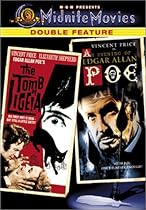 1. TOMB OF LIGEIA (1964). This adaptation of Edgar Alan Poe’s “Ligeia,” features Vincent Price as a man obsessed with the fear that his late wife will return from the grave to haunt him. Although technically too old for role, which was written as a young romantic lead, Price is wonderful as the doomed widower; with a little assist from the makeup department, he conveys the necessary mystique. Lady Rowena (Elizabeth Shepherd) meets and falls in love with him, inspiring him to overcome his fear and marry her. The story is told from Rowena’s point of view, as she is intrigued and enamored by this brooding, mysterious man, only to learn that the dark secret hanging over him will not easily be dispelled. Thanks to a strong performance by Shepherd, working from a great script by Robert Towne, Rowena emerges as one of cinema’s strongest leading ladies – willful and intelligent, she risks her life to drag her husband from the grip of the late Lady Ligeia. The horror element is very muted; the emphasis is on the doomed romance between the two lovers. A moody masterpiece, the film’s fear factor is mostly implied; director Roger Corman includes a few jump scares (the sudden snarl of a cat) and some hypnotic dream sequences, creating an almost surreal sense of dread the relies on Gothic atmopshere more than on-screen violence. In short, this Gothic Romance is the perfect date night rental: you can enjoy the “Gothic,” and she will enjoy the “Romance.”
1. TOMB OF LIGEIA (1964). This adaptation of Edgar Alan Poe’s “Ligeia,” features Vincent Price as a man obsessed with the fear that his late wife will return from the grave to haunt him. Although technically too old for role, which was written as a young romantic lead, Price is wonderful as the doomed widower; with a little assist from the makeup department, he conveys the necessary mystique. Lady Rowena (Elizabeth Shepherd) meets and falls in love with him, inspiring him to overcome his fear and marry her. The story is told from Rowena’s point of view, as she is intrigued and enamored by this brooding, mysterious man, only to learn that the dark secret hanging over him will not easily be dispelled. Thanks to a strong performance by Shepherd, working from a great script by Robert Towne, Rowena emerges as one of cinema’s strongest leading ladies – willful and intelligent, she risks her life to drag her husband from the grip of the late Lady Ligeia. The horror element is very muted; the emphasis is on the doomed romance between the two lovers. A moody masterpiece, the film’s fear factor is mostly implied; director Roger Corman includes a few jump scares (the sudden snarl of a cat) and some hypnotic dream sequences, creating an almost surreal sense of dread the relies on Gothic atmopshere more than on-screen violence. In short, this Gothic Romance is the perfect date night rental: you can enjoy the “Gothic,” and she will enjoy the “Romance.”
 2. I WALKED WITH A ZOMBIE (1943). Producer Val Lewton famously called this movie “Jane Eyre in the West Indies.” He may have been joking, but the statement was accurate enough in its way. The story follows a nurse named Betsy (Frances Dee) who gets a job on a plantation tending the brain-dead wife of her employer Paul (Tom Conway). The wife may or may not be a zombie (the film is deliberately ambiguous on this point); either way, her presence is a living a reminder of ugly family secrets that Paul would rather forget. Betsy falls in love with him, of course, but she sublimates her desire by trying to cure Paul’s wife, taking her to a voodoo ceremony. The attempt backfires: the locals are terrified of the zombie woman and want to destroy her. Atypically for the horror genre, the characterization and performances outweigh the horror; Director Jacques Tourner presents the horror almost entirely in terms of atmosphere, creating a dream-like world in which science and the supernatural vie for acceptance, but ultimately, the voodoo element is a backdrop for the love story between Betsy and Paul, with her in the Jane Ayre role and him as the Byronic Rochester substitute. Best of all, the lovers actually get together and (presumably) live happily ever after.
2. I WALKED WITH A ZOMBIE (1943). Producer Val Lewton famously called this movie “Jane Eyre in the West Indies.” He may have been joking, but the statement was accurate enough in its way. The story follows a nurse named Betsy (Frances Dee) who gets a job on a plantation tending the brain-dead wife of her employer Paul (Tom Conway). The wife may or may not be a zombie (the film is deliberately ambiguous on this point); either way, her presence is a living a reminder of ugly family secrets that Paul would rather forget. Betsy falls in love with him, of course, but she sublimates her desire by trying to cure Paul’s wife, taking her to a voodoo ceremony. The attempt backfires: the locals are terrified of the zombie woman and want to destroy her. Atypically for the horror genre, the characterization and performances outweigh the horror; Director Jacques Tourner presents the horror almost entirely in terms of atmosphere, creating a dream-like world in which science and the supernatural vie for acceptance, but ultimately, the voodoo element is a backdrop for the love story between Betsy and Paul, with her in the Jane Ayre role and him as the Byronic Rochester substitute. Best of all, the lovers actually get together and (presumably) live happily ever after.
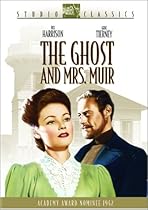 3. THE GHOST AND MRS MUIR (1947). This classic is much more romantic-comedy than horror, but the early scenes – when Mrs. Muir (Gene Tierney) moves into the old house and realizes it is haunted by the ghost of an old sea captain (Rex Harrison) are as effective as any genuine haunted-house movie. The ghost’s first appearance – a shadowy, out-of-focus silhouette – sends a shiver or two down the spine, and his later full-blown revelation -when Mrs. Muir lights and candle, revealing him standing next to her – is a genuine shock. After this, the film segues into a love story levened with humor, but Tierney and Harrison are absolutely wonderful, and the film will charm the woman in your life – and entertain you as well.
3. THE GHOST AND MRS MUIR (1947). This classic is much more romantic-comedy than horror, but the early scenes – when Mrs. Muir (Gene Tierney) moves into the old house and realizes it is haunted by the ghost of an old sea captain (Rex Harrison) are as effective as any genuine haunted-house movie. The ghost’s first appearance – a shadowy, out-of-focus silhouette – sends a shiver or two down the spine, and his later full-blown revelation -when Mrs. Muir lights and candle, revealing him standing next to her – is a genuine shock. After this, the film segues into a love story levened with humor, but Tierney and Harrison are absolutely wonderful, and the film will charm the woman in your life – and entertain you as well.
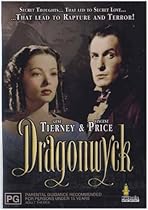 4. DRAGONWYCK (1946). This Gothic-Mystery-Romance features both Gene Tierney and Vincent Price; in many ways, it predates Price’s later TOMB OF LIGEIA, and it was filmed when he was still young enough to play a leading man. More important, this was before he had earned a reputation for screen villainy, so the horrible revelations about his character come as a complete surprise, instead of being telegraphed (as they are in LIGEIA). Price plays the wealthy Nicholas Van Ryn, who sweeps the lovely Miranda Wells (Tierney) off her feet and takes her as his bride to his ancestral estate of Dragonwyck. Miranda’s happiness is soon marred by strange noises in the night and other dark forebodings. Eventually we realize that Nicholas is interested in her only as a means of producing an heir to continue the family line, and if she fails in that duty, he may have to do away with her (as he did his previous wife) and find a replacement. It’s a bit of a stretch to call this a “horror” film, but it is steeped in Gothic atmosphere. Tierney, as always, is a captivating presence, and the romantic chemistry between her and Price is engaging, even if it eventually turns sour. If you like this film, you might also try REBECCA, the 1940 Alfred Hitchcock film starring Laurence Olivier and Joan Fontaine, with Judith Anderson as the wonderfully wicked servant Mrs. Danvers. It’s another Gothic Melodrama – not an outright horror film, but filled with mystery and romance that plays well with both male and female viewers.
4. DRAGONWYCK (1946). This Gothic-Mystery-Romance features both Gene Tierney and Vincent Price; in many ways, it predates Price’s later TOMB OF LIGEIA, and it was filmed when he was still young enough to play a leading man. More important, this was before he had earned a reputation for screen villainy, so the horrible revelations about his character come as a complete surprise, instead of being telegraphed (as they are in LIGEIA). Price plays the wealthy Nicholas Van Ryn, who sweeps the lovely Miranda Wells (Tierney) off her feet and takes her as his bride to his ancestral estate of Dragonwyck. Miranda’s happiness is soon marred by strange noises in the night and other dark forebodings. Eventually we realize that Nicholas is interested in her only as a means of producing an heir to continue the family line, and if she fails in that duty, he may have to do away with her (as he did his previous wife) and find a replacement. It’s a bit of a stretch to call this a “horror” film, but it is steeped in Gothic atmosphere. Tierney, as always, is a captivating presence, and the romantic chemistry between her and Price is engaging, even if it eventually turns sour. If you like this film, you might also try REBECCA, the 1940 Alfred Hitchcock film starring Laurence Olivier and Joan Fontaine, with Judith Anderson as the wonderfully wicked servant Mrs. Danvers. It’s another Gothic Melodrama – not an outright horror film, but filled with mystery and romance that plays well with both male and female viewers.
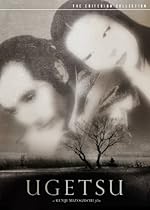 5. UGETSU (1953). Director Kenji Mizoguchi’s period piece, detailing the impact of civil war on two married couples, flirts with the horror genre in several scenes, ultimately turning into a ghost story. There are no overt shocks, but there are some wonderfully eerie moments when a husband realizes he is consorting with a ghost. The overall feeling is one of sorrow more than scares. The movie is ultimately about the price that women pay while their men try to achieve glory and honor during wartime. The result is a real tear-jerker that will have your girlfriend reaching for the tissue box and marveling at what a sensitive soul you are, while you enjoy the ghostly apparitions.
5. UGETSU (1953). Director Kenji Mizoguchi’s period piece, detailing the impact of civil war on two married couples, flirts with the horror genre in several scenes, ultimately turning into a ghost story. There are no overt shocks, but there are some wonderfully eerie moments when a husband realizes he is consorting with a ghost. The overall feeling is one of sorrow more than scares. The movie is ultimately about the price that women pay while their men try to achieve glory and honor during wartime. The result is a real tear-jerker that will have your girlfriend reaching for the tissue box and marveling at what a sensitive soul you are, while you enjoy the ghostly apparitions.
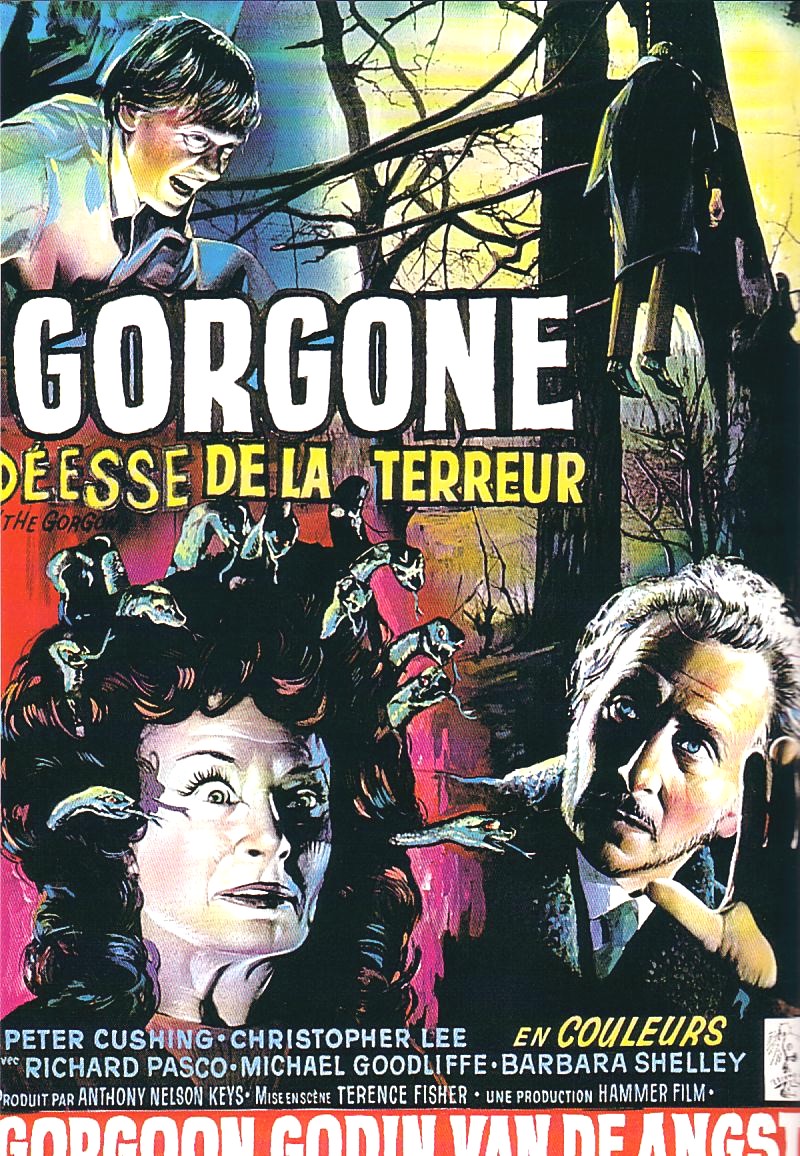 6. THE GORGON (1964). This is not the most effective Hammer horror film in terms of providing scares, but that is only because the emphasis is on romance. The film is a doomed love story about a young student named (Richard Pasco) who comes to a village where a monster is petrifying its victims. After a close encounter with the Gorgon, Paul is nursed back to health by Carla (Barbara Shelley) and falls in love with her. Carla, although she returns his affection, is bound by some dark power over her; eventually, we realize that during the full moon, she becomes the Gorgon. The dynamic acting duo of Peter Cushing and Christopher Lee are on hand as a doctor and a professor, each separately trying to solve the problem, but ultimately there is no hope for Carla or Paul. The film’s greatest achievement is that its horror effects are orchestrated for their emotional impact: this isn’t a movie that has you screaming in terror but weeping in sadness over the plight of the young lovers. The finale will have you and your lady-friend exchanging bodily fluids, but they will be tears of sadness.
6. THE GORGON (1964). This is not the most effective Hammer horror film in terms of providing scares, but that is only because the emphasis is on romance. The film is a doomed love story about a young student named (Richard Pasco) who comes to a village where a monster is petrifying its victims. After a close encounter with the Gorgon, Paul is nursed back to health by Carla (Barbara Shelley) and falls in love with her. Carla, although she returns his affection, is bound by some dark power over her; eventually, we realize that during the full moon, she becomes the Gorgon. The dynamic acting duo of Peter Cushing and Christopher Lee are on hand as a doctor and a professor, each separately trying to solve the problem, but ultimately there is no hope for Carla or Paul. The film’s greatest achievement is that its horror effects are orchestrated for their emotional impact: this isn’t a movie that has you screaming in terror but weeping in sadness over the plight of the young lovers. The finale will have you and your lady-friend exchanging bodily fluids, but they will be tears of sadness.
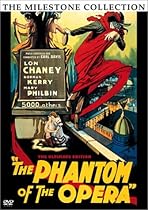 7. THE PHANTOM OF THE OPERA (1925). This famous tale of the deformed mystery man lurking beneath the Paris Opera House is now considered a horror film, but in its day it was more of a mystery-thriller-romance. Erik the Phantom (Lon Chaney) delivers a series of frights (including the famous unmasking of his horrifying visage), but the story is really about his hopeless love for the young and beautiful opera singer Christine (Mary Philbin). The style of this old silent film is dated and stagy, but Chaney keeps it interesting; also, the sets and photography capture the right atmosphere – part horror and part fairy tale – creating the perfect setting for the this variation on “Beauty and the Beast,” with the monster evoking sympathy because of the tender emotions hiding behind his ugly countenance. There have been several remakes. The 1962 version is perhaps even more of a chick flick in that it de-emphasizes the horror element and purifies the Phantom (Herbert Lom)’s motives: he’s no longer interested in Christine sexually, only spiritually. The result yields few frights, but the film possesses a tender quality rare in the horror genre – which should increase its appeal to the distaff side of the audience.
7. THE PHANTOM OF THE OPERA (1925). This famous tale of the deformed mystery man lurking beneath the Paris Opera House is now considered a horror film, but in its day it was more of a mystery-thriller-romance. Erik the Phantom (Lon Chaney) delivers a series of frights (including the famous unmasking of his horrifying visage), but the story is really about his hopeless love for the young and beautiful opera singer Christine (Mary Philbin). The style of this old silent film is dated and stagy, but Chaney keeps it interesting; also, the sets and photography capture the right atmosphere – part horror and part fairy tale – creating the perfect setting for the this variation on “Beauty and the Beast,” with the monster evoking sympathy because of the tender emotions hiding behind his ugly countenance. There have been several remakes. The 1962 version is perhaps even more of a chick flick in that it de-emphasizes the horror element and purifies the Phantom (Herbert Lom)’s motives: he’s no longer interested in Christine sexually, only spiritually. The result yields few frights, but the film possesses a tender quality rare in the horror genre – which should increase its appeal to the distaff side of the audience.
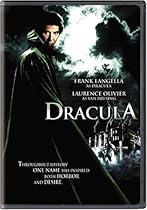 8. DRACULA (1979). There has always been a certain sexual innuendo underlying the Dracula myth, with the mysterious, dark, foreign stranger sneaking into the bedrooms of virginal British ladies. Bela Lugosi played up the foreign mystique, and Christopher Lee emphasized the sexual aggression, but Frank Langella turned the Count into a romantic anti-hero, dashing and seductive, who not only lusts for women (their bodies and their blood) but loves Lucy(Kate Nelligan) for her spirit and intelligence. In 1992, BRAM STOKER’S DRACULA, tries to emphasize the romance even more, but director Francis Ford Coppola fumbles, turning the story into an overwrought teen romance better suited to an episode of JERRY SPRINGER (vampires – and the women who love them).
8. DRACULA (1979). There has always been a certain sexual innuendo underlying the Dracula myth, with the mysterious, dark, foreign stranger sneaking into the bedrooms of virginal British ladies. Bela Lugosi played up the foreign mystique, and Christopher Lee emphasized the sexual aggression, but Frank Langella turned the Count into a romantic anti-hero, dashing and seductive, who not only lusts for women (their bodies and their blood) but loves Lucy(Kate Nelligan) for her spirit and intelligence. In 1992, BRAM STOKER’S DRACULA, tries to emphasize the romance even more, but director Francis Ford Coppola fumbles, turning the story into an overwrought teen romance better suited to an episode of JERRY SPRINGER (vampires – and the women who love them).
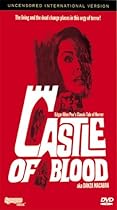 9. CASTLE OF BLOOD (1964). Allegedly based on the work of Edgar Alan Poe, this Italian Gothic horror story tells of Alan, a reporter who wagers he can spend a night alone in a haunted castle. He meets a variety of spooks, including a very alluring one named Elizabeth (played by Barbara Steele, the Queen of Horror). They fall in love, but being – literally – from two different worlds, they cannot stay together, or so it seems. As daylight draws near, the other ghosts come seeking the young man’s blood; Elizabeth tries to lead him to safety, but he dies on the verge of escape. The seemingly downbeat ending is actually a triumph of love over death. As the camera pans up to the sunlight, we hear the disembodied spirits of Alan and Elizabeth conversing, and we know that they are now together for eternity – the ultimate romantic fantasy. Steele also starred in a dual role as an innocent princess and a vampire-witch in the 1960 classic BLACK SUNDAY – a much more effective horror film that also has a strong romantic element, thanks to the chemistry between the princess and a young doctor (John Richardson) who seeks to save her from the vampire.
9. CASTLE OF BLOOD (1964). Allegedly based on the work of Edgar Alan Poe, this Italian Gothic horror story tells of Alan, a reporter who wagers he can spend a night alone in a haunted castle. He meets a variety of spooks, including a very alluring one named Elizabeth (played by Barbara Steele, the Queen of Horror). They fall in love, but being – literally – from two different worlds, they cannot stay together, or so it seems. As daylight draws near, the other ghosts come seeking the young man’s blood; Elizabeth tries to lead him to safety, but he dies on the verge of escape. The seemingly downbeat ending is actually a triumph of love over death. As the camera pans up to the sunlight, we hear the disembodied spirits of Alan and Elizabeth conversing, and we know that they are now together for eternity – the ultimate romantic fantasy. Steele also starred in a dual role as an innocent princess and a vampire-witch in the 1960 classic BLACK SUNDAY – a much more effective horror film that also has a strong romantic element, thanks to the chemistry between the princess and a young doctor (John Richardson) who seeks to save her from the vampire.
10. THE GIRL IN A SWING (1989). This small independent film, based on the novel by Richard Adams, is essentially a love story about a repressed British man (Rupert Frazer), who meets and marries a mysterious German girl named (Meg Tilly). In the great tradition of tragic romances, the marraige is doomed, but only gradually do hints of a haunting arise, related to some guilty secret of Karin’s. The relentless ghost is seldom seen, keeping the horror content to a minimum; instead, the film focuses on the tragedy of the relationship. Though far from a masterpiece, the film works in its own way, achieving its emotional effects with far less cheesy manipulation than LOVE STORY – and it has a ghost, too, so what more do you want?
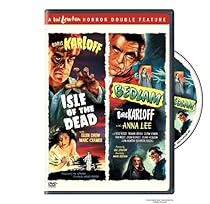 11. BEDLAM (1946). Another Val Lewton production, this period piece tells of an arrogant woman (Anna Lee) who is unfairly confined to the infamous English asylum. Although the official star is Boris Karloff (FRANKENSTEIN) as the asylum’s evil overlord, Lee gives a great performance in what is truly the lead role: charting her character’s arc from selfishness to concern for the other patients, she emerges as one of the great female characters in the history of horror cinema.
11. BEDLAM (1946). Another Val Lewton production, this period piece tells of an arrogant woman (Anna Lee) who is unfairly confined to the infamous English asylum. Although the official star is Boris Karloff (FRANKENSTEIN) as the asylum’s evil overlord, Lee gives a great performance in what is truly the lead role: charting her character’s arc from selfishness to concern for the other patients, she emerges as one of the great female characters in the history of horror cinema.
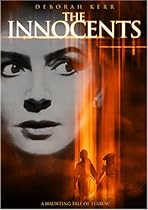 12. THE INNOCENTS (1960). This excellent English ghost story, based on Henry James’ The Turn of the Screw, stars Deborah Kerr as Miss Giddens, a governess put in charge of two children living in a secluded mansion. She gradually comes to believe that the house is haunted and that the children are in league with the ghosts. The film is deliberately ambiguous: are the ghosts real or is Miss Giddens imagining them? Either way, it is a wonderful portrait of a woman desperately dealing with a horrible situation without a hero to ride in and rescue her.
12. THE INNOCENTS (1960). This excellent English ghost story, based on Henry James’ The Turn of the Screw, stars Deborah Kerr as Miss Giddens, a governess put in charge of two children living in a secluded mansion. She gradually comes to believe that the house is haunted and that the children are in league with the ghosts. The film is deliberately ambiguous: are the ghosts real or is Miss Giddens imagining them? Either way, it is a wonderful portrait of a woman desperately dealing with a horrible situation without a hero to ride in and rescue her.
 13. THE HAUNTING (1963). Another great ghost story, this one portrays an attempt to investigate the “Mount Everest of Haunted Houses.” Based on Shirley Jackson’s The Haunting of Hill House, the story is told from the point of view of Nell (Julie Harris), a fragile young woman whose desperate need for love and acceptance lures her to succumb to Hill House. An effective scare-fest, this film is also a great character study that should appeal to female viewers. Men can enjoy the scares and the presence of Claire Bloom as Theo, whom the film none too subtly insinuates is a lesbian. The 1974 film THE LEGEND OF HELL HOUSE deals with a similar situation: a team of two men and two women attempt a sceintific investigation of a haunted house. The scares are a bit more overt, and the psychology less in depth, but the film retains some “chick flick” interest thanks to the performances of Pamela Franklyn and Gayle Hunnicutt, who help create characters that the women in the audience can identify with.
13. THE HAUNTING (1963). Another great ghost story, this one portrays an attempt to investigate the “Mount Everest of Haunted Houses.” Based on Shirley Jackson’s The Haunting of Hill House, the story is told from the point of view of Nell (Julie Harris), a fragile young woman whose desperate need for love and acceptance lures her to succumb to Hill House. An effective scare-fest, this film is also a great character study that should appeal to female viewers. Men can enjoy the scares and the presence of Claire Bloom as Theo, whom the film none too subtly insinuates is a lesbian. The 1974 film THE LEGEND OF HELL HOUSE deals with a similar situation: a team of two men and two women attempt a sceintific investigation of a haunted house. The scares are a bit more overt, and the psychology less in depth, but the film retains some “chick flick” interest thanks to the performances of Pamela Franklyn and Gayle Hunnicutt, who help create characters that the women in the audience can identify with.
 14. THE OTHERS (2001). Intentionally molded in the tradition of THE INNOCENTS, this ghost story features another strong female lead, in this case played by the talented Nicole Kidman. The scares are extremely effective, but what holds interest from beginning to end is the focus on Kidman’s Grace Stewart as she desperately tries to protect her children from the mysterious forces at work in their isolated house.
14. THE OTHERS (2001). Intentionally molded in the tradition of THE INNOCENTS, this ghost story features another strong female lead, in this case played by the talented Nicole Kidman. The scares are extremely effective, but what holds interest from beginning to end is the focus on Kidman’s Grace Stewart as she desperately tries to protect her children from the mysterious forces at work in their isolated house.
 15. THE ORPHANAGE (2007). Belen Rueda stars as Laura, a woman whose son goes missing in their new house, possibly abducted by ghosts. As with the three previous entries on our list, this film orchestrates a series of unnerving spooky encounters while focusing on the drama of the woman trying to deal with them. There is also a strong maternal element that plays well with women. Although vulnerable, Laura is not a Scream Queen or a victim; she’s not even the traditional “Final Girl” who survives and triumphs. She’s a complex, damaged woman who keeps going even when pushed to extremes. The film was executive produced by Guillermo Del Toro, whose PAN’S LABYRINTH and THE DEVIL’S BACKBONE may also appeal to women, because of their portrait of childhood innocence menaced by adult horrors, with empahsis on emotional content.
15. THE ORPHANAGE (2007). Belen Rueda stars as Laura, a woman whose son goes missing in their new house, possibly abducted by ghosts. As with the three previous entries on our list, this film orchestrates a series of unnerving spooky encounters while focusing on the drama of the woman trying to deal with them. There is also a strong maternal element that plays well with women. Although vulnerable, Laura is not a Scream Queen or a victim; she’s not even the traditional “Final Girl” who survives and triumphs. She’s a complex, damaged woman who keeps going even when pushed to extremes. The film was executive produced by Guillermo Del Toro, whose PAN’S LABYRINTH and THE DEVIL’S BACKBONE may also appeal to women, because of their portrait of childhood innocence menaced by adult horrors, with empahsis on emotional content.
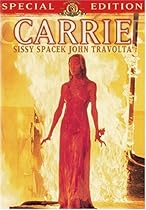 16. CARRIE (1976). Despite director Brian DePalma’s reputation as a cinematic misogynist, this hit horror film features two actresses (Sissy Spacek and Piper Laurie) in strong roles, giving Oscar-nominated performances. This is more a high-school horror film than a chick flick, but it captures a sense of ordinary people living in a world we all recognize, and despite the horrible vengeance she ultimately unleashes on her tormentors, Carrie remains a sympathetic character that women – and men – can relate to.
16. CARRIE (1976). Despite director Brian DePalma’s reputation as a cinematic misogynist, this hit horror film features two actresses (Sissy Spacek and Piper Laurie) in strong roles, giving Oscar-nominated performances. This is more a high-school horror film than a chick flick, but it captures a sense of ordinary people living in a world we all recognize, and despite the horrible vengeance she ultimately unleashes on her tormentors, Carrie remains a sympathetic character that women – and men – can relate to.
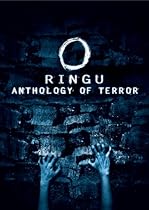 17 RING 0: BIRTHDAY (2000). This prequel to 1998’s RING (the film that launches the recent J-Horror wave) covers some of the same territory as CARRIE. Set in a small acting troup, it tells the story of Sadako (Yukie Nakama), a young misfit with strange powers, who is tormented by her fellow thespians until she turns the tables. Presenting a far more sympathetic portrait of Sadako than seen in the other RING films, this is pretty much a bust as a horror film, but it is an interesting portrait of a sad, lonely, mixed up girl trying to fit in. In general, ghost movies from Japan and other Asian nations should find favor with female viewers: they tend to feature female characters as the protagonists, and the restless spirits are almost always women, their power in death redressing the imbalance they suffered during their lives under a patriarchal culture. Besides RING, check out PHONE, THE EYE, JU-ON: THE GRUDGE, and SHUTTER.
17 RING 0: BIRTHDAY (2000). This prequel to 1998’s RING (the film that launches the recent J-Horror wave) covers some of the same territory as CARRIE. Set in a small acting troup, it tells the story of Sadako (Yukie Nakama), a young misfit with strange powers, who is tormented by her fellow thespians until she turns the tables. Presenting a far more sympathetic portrait of Sadako than seen in the other RING films, this is pretty much a bust as a horror film, but it is an interesting portrait of a sad, lonely, mixed up girl trying to fit in. In general, ghost movies from Japan and other Asian nations should find favor with female viewers: they tend to feature female characters as the protagonists, and the restless spirits are almost always women, their power in death redressing the imbalance they suffered during their lives under a patriarchal culture. Besides RING, check out PHONE, THE EYE, JU-ON: THE GRUDGE, and SHUTTER.
 18. ONIBABA (1964). This black-and-white Japanese horror classic has few traditional chick flick elements, but it focuses on two women in the lead roles. Like UGETSU, it portrays the suffering of women while their men are away at war; in this case a young woman and her mother-in-law make ends meet me murdering lone samurai and selling their armour. Toward the end there is a demonic appartion and possibly a curse, but much of the film’s appeal lies in watching the women dish out death to the men who fall into their trap.
18. ONIBABA (1964). This black-and-white Japanese horror classic has few traditional chick flick elements, but it focuses on two women in the lead roles. Like UGETSU, it portrays the suffering of women while their men are away at war; in this case a young woman and her mother-in-law make ends meet me murdering lone samurai and selling their armour. Toward the end there is a demonic appartion and possibly a curse, but much of the film’s appeal lies in watching the women dish out death to the men who fall into their trap.
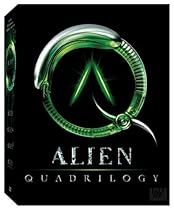 19. ALIEN (1979). There is not much about this film that labels it as a chick flick, but it does feature Sigourney Weaver as Warrant Officer Ripley, the character who once and for all over-turned the cliche of women as helpless screaming victims in monster movies. That should be enough to get your girlfriend to sit through the chest-burster and other horrors on display.
19. ALIEN (1979). There is not much about this film that labels it as a chick flick, but it does feature Sigourney Weaver as Warrant Officer Ripley, the character who once and for all over-turned the cliche of women as helpless screaming victims in monster movies. That should be enough to get your girlfriend to sit through the chest-burster and other horrors on display.
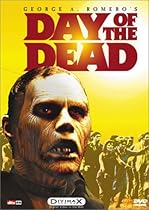 20. DAY OF THE DEAD(1985). This last title is really pushing it, but we think you deserve something in return for making the effort to find common ground with your squeamish main squeeze. After sitting through all those Gothic Romances, subtle ghost stories, and psychological terror tales, you want some gruesome gore, right? Well, this film from writer-director George Romero is just the thing: it’s brimming with blood, but it also has a strong female character in the lead, Lori Cardilel as Sarah. Inverting the formula of NIGHT OF THE LIVING DEAD, in which Barbra (Judith O’Dea) was pretty much a useless space case, Romero makes Sarah the only one who can keep her shit together while humanity totters on the brink of extinction. That may not make it a chick flick, but it should offer at least a little redeeming value for making the love your life watch a man ripped in half by cannibalistic zombies.
20. DAY OF THE DEAD(1985). This last title is really pushing it, but we think you deserve something in return for making the effort to find common ground with your squeamish main squeeze. After sitting through all those Gothic Romances, subtle ghost stories, and psychological terror tales, you want some gruesome gore, right? Well, this film from writer-director George Romero is just the thing: it’s brimming with blood, but it also has a strong female character in the lead, Lori Cardilel as Sarah. Inverting the formula of NIGHT OF THE LIVING DEAD, in which Barbra (Judith O’Dea) was pretty much a useless space case, Romero makes Sarah the only one who can keep her shit together while humanity totters on the brink of extinction. That may not make it a chick flick, but it should offer at least a little redeeming value for making the love your life watch a man ripped in half by cannibalistic zombies.
If you are interested in the films on this list, most of them are reviewed more fully elsewhere on the website. You can access the reviews by clicking on the titles that contain hyperlinks.
NOTE: Yes, this article makes sexist assumptions about what constitutes a “chick flick,” and we know that some women do not like the term – an issue we addressed in this previous editorial.
UPDATE (04/27/08): We have received some suggestions for titles we overlooked:
- Lucius Gore of Eplatter recommends SCREAM. I suppose the combination of humor and a strong “Final Girl” character would appeal to women more than a standard slasher movie.
- Brian Collins of Horror Movie a Day recommends GINGER SNAPS.
- Jeff Allard of Dinner with Max Jenke believes that ALIENS has a greater female appeal than ALIEN, which makes sense, considering the maternal themes in the film. He also recommends ROSEMARY’S BABY – which is such an obvious choice that I am embarrassed to have overlooked it. Roman Polanski’s adaptation of the Ira Levin novel is considered to be one of the greatest horror movies ever made (EXORCIST director William Friedkin puts it on his very short list here), and it’s all about a young married woman (Mia Farrow)undergoing her first pregnancy. Yes, we all know she is going to give birth to the spawn of Satan – or is she? The film actually delivers little-to-no evidence on this score except the professed belief of the Satanic cult (we’re supposed to trust them?). In a way, the movie plays out as a drama about a woman undergoing a trouble pregnancy, who is betrayed by her husband, and bedeviled by some kooky neighbors. In othe words, it is very much set in the real world, and features a situation that is completely relatable; even if the details are extreme, almost any woman could watch this movie and identify with what poor Rosemary is suffering.
UPDATE (01/28/09): Someone on an IMDB message board thread, linking to this article, suggested that THE DESCENT should have made the list.























![[rec] (2007) [rec[ (2007): This Spanish film filtered zombies through the lens of a hand-held shaky-cam, in the style of "found footage" films. The explanation for the zombies is a combination of virus and supernatural, an idea explored in the first of two sequels. There was also an American remake, QUARANTINE.](http://cinefantastiqueonline.com/wp-content/uploads/rec.jpg)



























